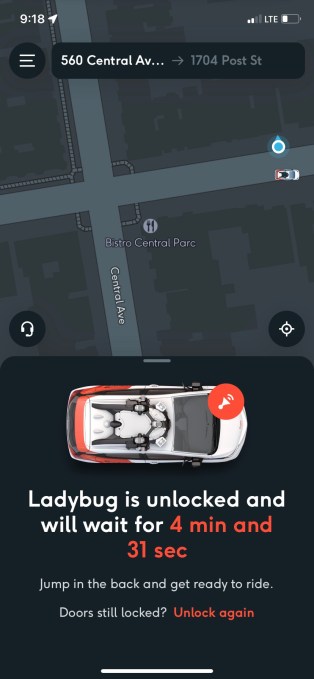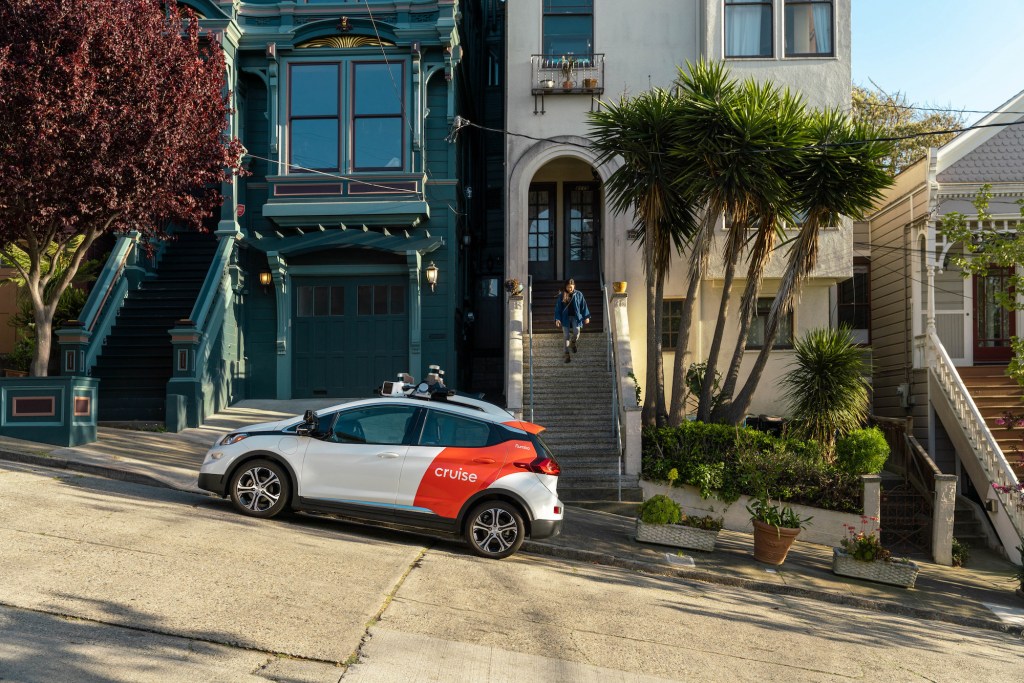Cruise never planned to make its own silicon. But in the quest to commercialize robotaxis — and make money doing it — those never-planned pursuits can suddenly seem a lot more appealing.
Cruise realized that the price of chips from suppliers was too high, the parts were too big and the reliability of the third-party technology just wasn’t there, Carl Jenkins, Cruise’s vice president of hardware, told TechCrunch during a tour of the company’s hardware lab last month.
Amid a hiring spree that began in 2019 and continued into 2020, Cruise doubled down on its own hardware, including its own board and sensors. The investment has helped the company develop smaller, lower-cost hardware for its vehicles. It has also resulted in its first production board, the C5, which is powering the current generation of autonomous Chevy Bolts.
When the company’s purpose-built Origin robotaxi starts hitting the streets in 2023, it will be outfitted with the C6 board. That board will eventually be replaced with the C7, which will have Cruise’s Dune chip. Dune will process all of the sensor data for the system, according to Cruise.
Typically, automakers use parts and sensors from Tier 1 suppliers in order to reduce R&D and manufacturing costs. Cruise couldn’t see a way to launch its autonomous ride-hailing without doing more of the work itself. The result is that the C7 board is 90% cheaper, has a 70% reduction in mass and uses 60% less power than chips provided by a supplier.
It’s not just chips that are being taken care of by the company. While long-range lidars and ultrasonic sensors are still sourced from third parties, nearly everything else, including cameras, short-range lidar and radar, are also being developed in-house.
Cruise found that off-the-shelf radar just didn’t have the resolution they needed for their vehicles to operate. Like the board, there’s a long-term cost reduction of about 90%, according to Jenkins.
“I was told the price point I have to meet this hardware for 2025,” Jenkins said. “So I went to all the CTOs of Bosch, Continental and ZF over in Germany. ‘What do you have in your research tanks that you’re doing that meets this?’ Nothing, not even started. ‘Okay, if you start today, how long should it take?’ Seven years.”
At that point, Jenkins was able to increase his 20-person team to 550.
When asked about the costs of building the Origin with in-house-developed hardware versus pieces sourced from suppliers, CEO Kyle Vogt told TechCrunch, “We couldn’t do it. It doesn’t exist.”
That’s not to say that Cruise doesn’t want to be able to buy the hardware it needs, however.
“What we found in the AV industry is a lot of the components that have the robustness needed to operate in a harsh automotive environment didn’t have the capabilities needed for an AV. The components that did have the (AV) capabilities needed weren’t capable of operating in those harsh environments,” Vogt said.
Made at Cruise, used at GM?
Automakers (not counting Tesla) have taken a more cautious approach to autonomous vehicles that would be sold to consumers. The technology built and proven out by Cruise could eventually make its way into a GM product sold to a customer.
And there is reason to believe it will.
GM CEO and Chairman Mary Barra has repeatedly said that the automaker will make and sell personal autonomous vehicles by mid-decade.
“We use Cruise as a bellwether for us for autonomous vehicle technology and the stack and how it operates,” GM president Mark Reuss told TechCrunch editor Kirsten Korosec in a recent interview. As Cruise develops its AV tech, its parent company has focused its efforts on advanced driver assistance systems Super Cruise and now Ultra Cruise.
“When we start researching and looking at personal autonomous vehicles there are choices, like does the car have pedals or does it have pedals that are deployable or does it not have pedals at all,” Reuss said. “And so we’re looking at what people want and those aren’t easy questions to answer.”
Just a few years shy of its mid-decade goal, GM still has to considerable work to do, including its go-to-market strategy for these personal autonomous vehicles (or as Reuss calls them, PAVs). The feedback from its recent InnerSpace autonomous concept for Cadillac
GM hasn’t decided whether these PAVs will launch as an up-market product or whether it will be attached to an existing vehicle model or a dedicated vehicle, Ruess added.
Bumps in the road

Cruise currently runs an autonomous ride-hailing business in San Francisco but only during the middle of the night (10 p.m. until 5:30 a.m.) and only within 30% of the city. The company notes that this decision was based more on making sure its vehicles work during less hectic traffic times. It’s currently working to expand those area and time constraints.
It’s not just San Francisco that will see more driverless Chevy Bolts ferrying passengers around. Cruise plans to expand to Phoenix, Arizona and Austin, Texas in the next 90 days.
Scaling is Cruise’s next chapter. However, the hiccups keep coming. There have been multiple reports of Cruise robotaxis blocking intersections and other issues.
One vehicle was involved in a collision at an intersection which prompted the company to update the software on 80 of its vehicles. In April of this year, a Bolt was pulled over for not having its headlights on and at one point pulled away from the police officer. And of course, there is the infamous group of over a half dozen Cruise Bolts that were assembled at an intersection, unable to determine where to go next, causing traffic issues.
When asked about the bunching up of the vehicles, Vogt noted, “This is part of operating, parting of scaling. It’s a normal bump in the road.” The CEO noted that it was an inconvenience and not a safety issue. Vogt said that AVs have a lot of back-end services and one of them “flipped” and didn’t come back online quickly enough. How they all ended up in the same intersection is that at the time there was only one launch location for the vehicles and they were cruising along one of their main corridors near that launch location. Since then Cruise has incorporated resiliency techniques in the AVs to make them more tolerant.
The company (and by extension, Vogt) is confident in its in-house-built autonomous ride-hailing system. Now it needs to convince skeptics that a ride in a vehicle without a driver is worth paying for in cities outside tech-friendly San Francisco.
Our driverless ride
At the end of the tour, Cruise set us up with an autonomous ride in a Bolt.
Our vehicle, dubbed Ladybug, arrived and with a tap on the app, we unlocked the doors and cruised (no pun intended) around the city at night on our way to Japan Town.
Along the route, multiple vehicles were parked with their driver’s side doors opened. The Bolt slowed slightly, turned on its blinker and briefly slid into the other lane before landing back into its own. At four-way stop intersections, it took on the personality of a cautious human, pulling out only after it determined that the other vehicles would obey the rules of the road.
It was exciting initially, and then boring, which is exactly what driverless ride-hailing should focus on. Yes, it’s slightly weird to be in a car driven by a robot, but after 20 minutes of being carted around by a careful robot, the last 10 minutes are spent wondering if you’ll get stuck at an intersection just to add some excitement to the ride.
Additional reporting from transportation editor Kirsten Korosec.































Comment